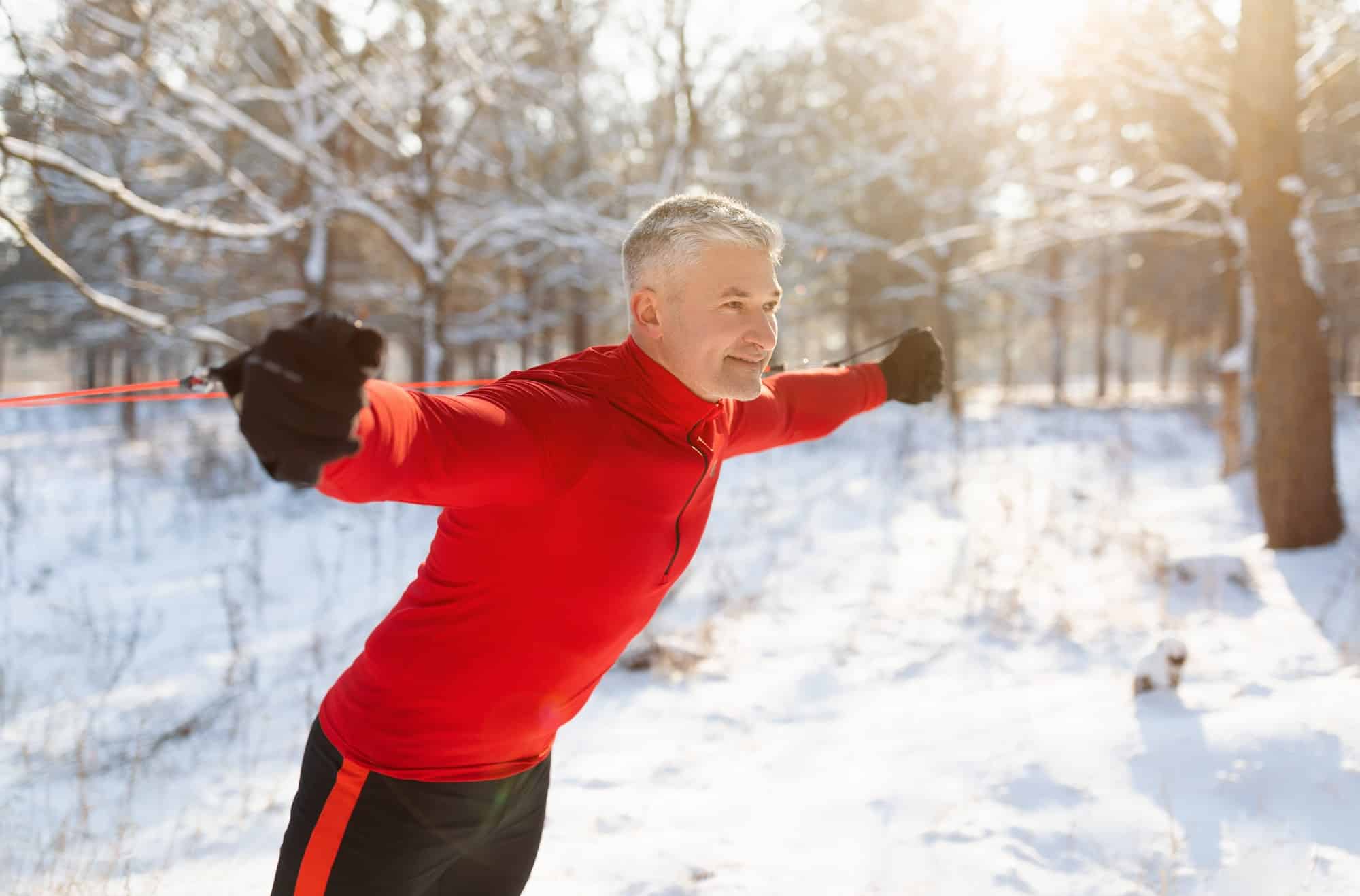What’s the Latest in Heat Acclimatization Methods for Desert Ultramarathon Runners?

Exposure to heat during endurance sports like desert ultramarathons is a reality athletes must confront. The human body, in its infinite wisdom, has a way of adjusting to the scorching conditions. This process is known as heat acclimation and is widely considered an essential aspect of preparation for endurance athletes who engage in hot weather sports. Whether you’re training for your first ultra-endurance race or you’re a seasoned professional, understanding the latest in heat acclimation methods is crucial. This article delves into the world of heat acclimation, its impact on sports performance, and how athletes can better prepare their bodies for the challenging environment.
The Science Behind Heat Acclimation
Heat acclimation is a complex process involving numerous physiological adjustments. It’s a survival mechanism that helps the body cope with elevated temperatures. Understanding this process is crucial for athletes, specifically those who participate in hot weather sports like desert ultramarathons.
En parallèle : How Can Youth Soccer Teams Incorporate Cognitive Training for Better Decision Making?
According to various studies published on PubMed and CrossRef, heat acclimation leads to several physiological responses. These include an increased plasma volume, reduced heart rate, improved sweat response, and enhanced thermal tolerance. Moreover, these adaptations can greatly benefit sports performance by reducing the risk of heat-related illnesses and enhancing endurance capacity.
Recent Google scholar research also underpins the critical role of heat acclimation in enhancing an athlete’s performance in hot conditions. For example, a study found that runners who acclimated to heat before a race performed significantly better than those who did not.
A découvrir également : How Can Plyometric Training be Tailored for Youth Basketball Centers?
Training for Heat Acclimation
Training for heat acclimation involves exposing the body to a hot environment to stimulate physiological adaptations. However, it’s important to note that not all heat acclimation methods are created equal. Therefore, it’s vital for athletes to choose the right training strategy.
A common heat acclimation practice is passive heat acclimation (PHA), which involves non-exercise exposure to heat, such as sauna sessions or hot baths. However, Physiol journals suggest that active heat acclimation (AHA), involving exercise in a hot environment, is more beneficial for endurance athletes.
Many runners, especially those preparing for desert ultramarathons, are turning to heat acclimation training camps. These camps offer structured and supervised training sessions in hot environments, ensuring athletes get the most out of their heat acclimation training.
Monitoring Heat Acclimation Progress
Just like any other training regimen, it’s important to track the progress of your heat acclimation training. This helps you understand how your body is adapting and allows for adjustments when necessary.
Core body temperature and heart rate are two essential parameters to monitor during heat acclimation training. An increase in the body’s ability to maintain a lower core temperature and a decrease in heart rate during exercise in the heat are good indicators of successful heat acclimation.
The latest technology, such as wearable devices and smartwatches, has made it easier for athletes to track these parameters. These tools provide real-time data, allowing athletes to monitor their body’s response to heat stress and adjust their training accordingly.
Nutritional Strategies for Heat Acclimation
Nutrition plays a pivotal role in heat acclimation. Proper hydration and electrolyte balance are crucial in maintaining athletic performance in hot environments. In fact, many performance losses in the heat are directly related to dehydration.
When it comes to hydration, water alone is not enough. Athletes need to replenish electrolytes lost through sweat, especially sodium. There are numerous sports drinks available on the market that provide a good balance of electrolytes.
Additionally, research suggests that certain dietary supplements can aid in heat acclimation. For instance, some studies point to the potential benefits of beta-alanine – a naturally occurring amino acid – in improving thermoregulatory response during exercise in the heat.
Mental Preparation for Running in the Heat
Heat not only imposes a physical challenge on runners. It also tests their mental fortitude. Running ultra distances in scorching desert conditions is an intensely demanding feat. Therefore, mental preparation is an essential component of heat acclimation.
Visualization techniques, meditation, and mindfulness exercises can help athletes prepare mentally for the extreme conditions. Research indicates that these methods can enhance an athlete’s resilience and capacity to endure discomfort, which is especially beneficial in extreme races.
In conclusion, heat acclimation is an integral part of preparation for desert ultramarathon runners. It entails both physical and mental adaptations that enable athletes to perform optimally in hot conditions. As science and technology continue to evolve, so do the methods for heat acclimation training, offering promising prospects for athletes braving the heat in their quest for glory.
Advanced Technologies in Heat Acclimation Training
As we move forward in the pursuit of excellence in desert ultramarathon performance, advances in technology are playing an increasingly important role in heat acclimation. Modern technology, such as smartwatches and wearable devices, has revolutionized the way we monitor our body’s response to heat stress. These indispensable tools are now a standard part of training for many athletes, providing real-time data on key parameters such as heart rate and core temperature.
With these devices, athletes are able to closely monitor their body’s physiological responses during exercise in hot conditions. This real-time data tracking allows for immediate adjustments to training intensity and rest periods, ensuring optimal heat acclimation and reducing the risk of heat illness. Moreover, this advanced technology allows athletes and coaches to analyze data over time and identify trends, which can inform future training strategies and further enhance performance.
Additionally, some of these devices can also monitor hydration and sweat rate, two crucial factors in heat acclimation training. Maintaining electrolyte balance and avoiding dehydration are essential in hot environments, and this technology enables athletes to stay on top of these parameters with relative ease.
Furthermore, there are also promising developments in training clothing. "Smart" apparel with embedded sensors can provide data on skin temperature and sweat rate, further enhancing the athlete’s ability to monitor their heat acclimation progress.
The Future of Heat Acclimation
The field of heat acclimation is continuously advancing, fueled by the collective knowledge gathered from countless PubMed, CrossRef, and Google Scholar articles. The integration of modern technology into training regimes is reshaping the way athletes prepare for desert ultramarathons and other hot-weather sports.
Moving forward, researchers and sports medicine professionals will continue to study and refine training methods, aiming to optimize heat acclimatization for endurance athletes. Emerging research on nutrition and dietary supplements, mental preparation techniques, and the use of advanced technology in training promises an exciting future for heat acclimation methods.
In the near future, we can expect to see even more advanced technology designed to aid in heat acclimation. Artificial Intelligence (AI) and Machine Learning algorithms could potentially analyze an athlete’s physiological data and provide personalized training programs for optimal heat acclimation.
In conclusion, heat acclimation is not just about surviving the brutal conditions of a desert ultramarathon – it is about thriving. With the right preparation and the latest methods in heat acclimation, athletes can redefine their limits and achieve their ultimate performance goals. The future of heat acclimation is bright and filled with exciting possibilities, and we look forward to seeing the continued evolution of this crucial aspect of endurance sports training.
